100th article!! Can you believe this? We can’t, surely. But here we are! Some 9 years back, while honeymooning in Bali, the idea of starting a travel blog struck us. Both of us are travel-holics; one loves to write while the other has photography as a hobby. So, why not share our travel experience, we thought. But then life happened. We became entangled in our professional fields, and the plan of travel blog took a backseat. Finally, in 2019, we published our first blog about North Sikkim, and never looked back since. We continued exploring India and scribbled our journey in our blog. And in this incredible journey, we found companions in you, our committed readers. Without your encouraging words, we would have hardly come this far. Merci!
For our 100th article, we thought of sharing snippets from 7 of our favourite places in India that we would relive again. Here we go!
Table of Contents
Hampi: A Living Canvas of Stones and Stories
Hampi is always the first name that invariably pops up in our conversation regarding revisiting a place. The appeal of Hampi can hardly be described in mere words. It casts a spell even before you travel there, alluring you while you are immersing yourself in its countless ruins and its charm even continues to enchant you long after you return home.
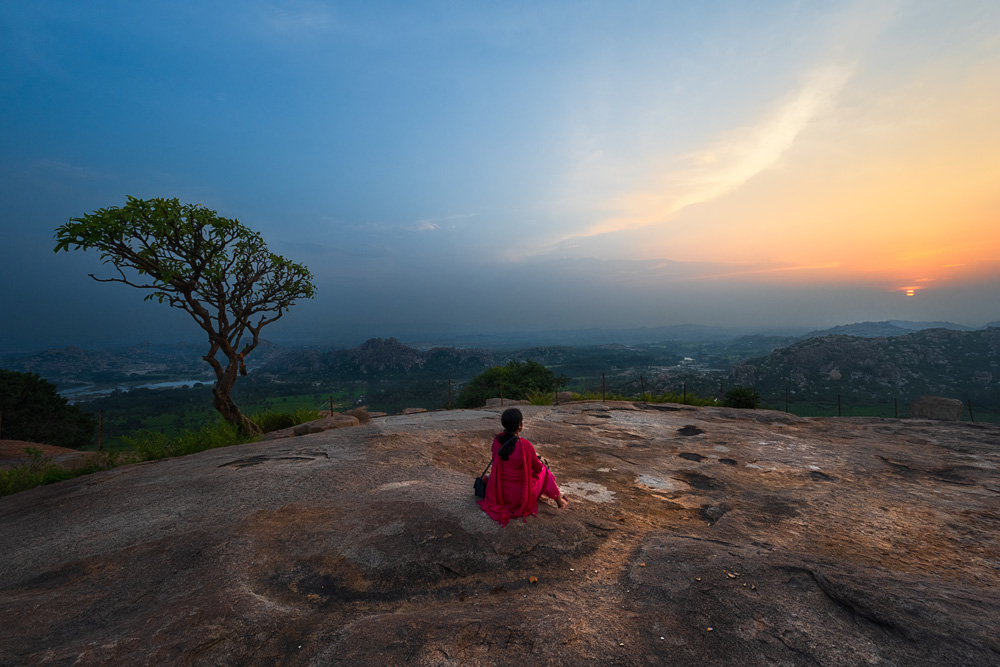
It was a love at first sight with Hampi. That it will forever reside in our hearts was confirmed on our last evening in Hampi. After a long day of rummaging through the ruins of Hampi, we were sitting atop Matanga Hill. From the hill, we relished the panoramic view of Hampi with the Virupaksha Temple at its heart. The sun was ready to call it a day as it brushed the sky in all shades of reds and oranges. The iconic Virupaksha Temple glistened under the last rays of the setting sun, as the sounds of ‘stotram’ and bells permeated throughout Hampi. The breeze blew over the mounds of rock, carrying along with it a whiff of an era that had been lost long ago. And down there, Tungabhadra flowed, as it has been flowing for the past thousands of years and witnessing the rise and fall of a glorious saga called Vijayanagara.

The gloomy evening was upon us. We climbed down Matanga Hill. The full moon of Kojagari was shining brightly above the Virupaksha Temple. While returning, we took the same winding road that we travelled in the morning. One by one, we drove by the Hemkuta Hill, Ganesha monoliths, Krishna Temple, and Narasimha statue. How wistful we felt, glancing at the monuments one last time. The breeze was still there, flurrying across the monuments as if to keep their solitude at bay. The breeze touched our faces, reminding us gently that so many stories have yet left untold. We were leaving Hampi for now but also leaving pieces of our hearts at Hampi with a promise to return.

About Hampi:
Hampi is located in central Karnataka, near the state border with Andhra Pradesh. It is situated on the banks of the Tungabhadra River. It is 376 km from Bengaluru and 165 km from Hubli. Hampi was the capital of the mighty Vijayanagara Empire. It was the second largest city of the Medieval Age. It was also the richest city in the contemporary world. Foreign visitors from Persia, Italy, Portugal, and Russia have left chronicles of a prosperous city, which was conquered by the Deccan Sultanate troops in 1565 CE, ravaged for six months, and then abandoned.
Read our blogs on Hampi here.
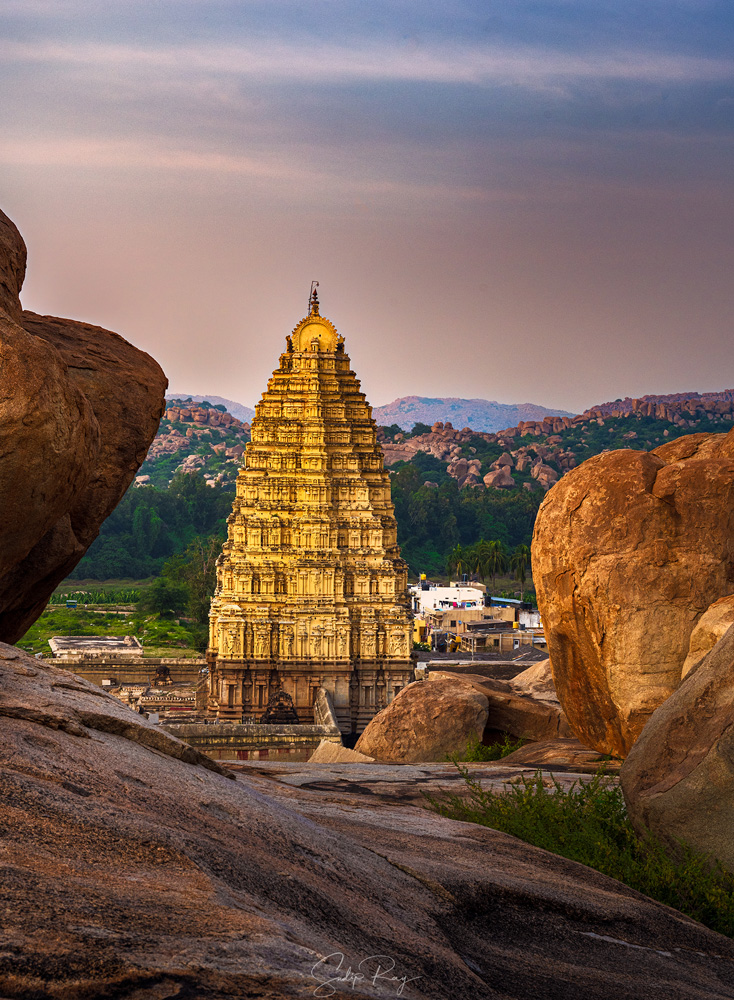
Orchha: A Love Letter to its Forgotten Splendour
Steering through the winding lanes of Orchha, the autorickshaw hurriedly dropped us near the ghat. Barely an hour back, we had reached Orchha from the temple town of Khajuraho. In no time, we dropped our bags in the hotel room and headed straight to the historic town’s ghat. It was almost the time for the sunset.
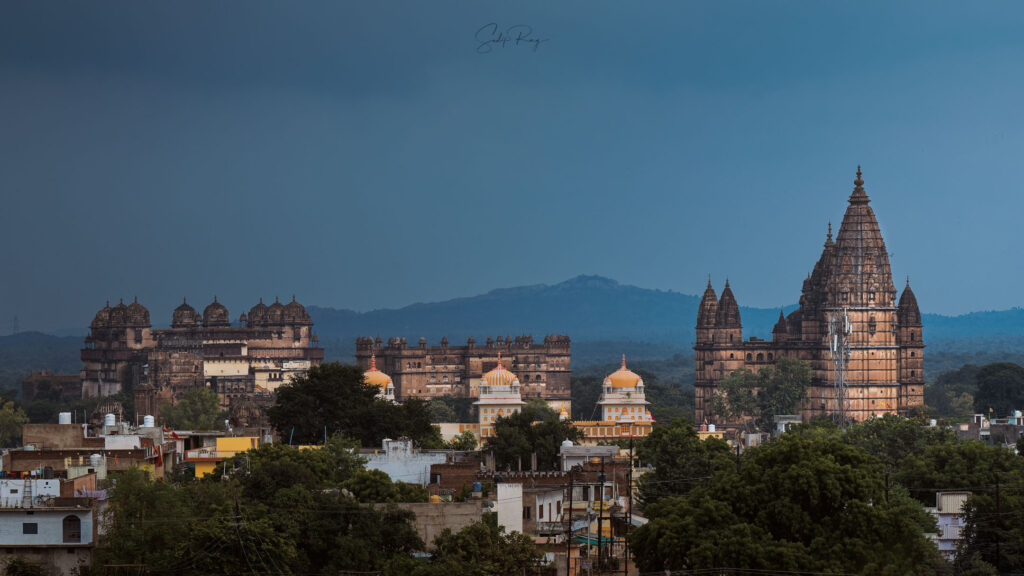
Crossing a dilapidated bridge, we walked to the other side of the Betwa River. The weather had suddenly taken an ugly turn. The sky was gradually obscured with rain clouds and the wind had picked up its space. We got to the Betwa’s shore, and now our eyes were fixated on the Chhatris, the royal cenotaphs, and how their crests adorned Orchha’s skyline. Sadly, the sun was shrouded by the clouds and we missed our chance to relish the sunset with the Chhatris as a backdrop.
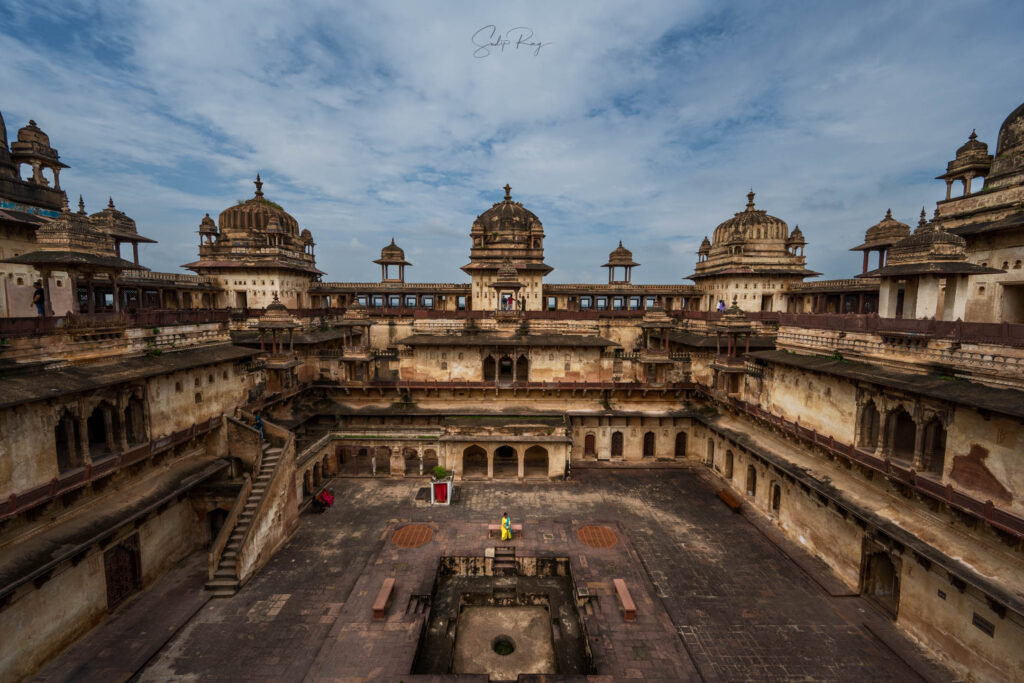
Dejected, we returned to the ghat on the other side of the Betwa. No sooner had we reached than the drizzle started. In no mood for returning to the confines of a hotel room, we sheltered ourselves under an umbrella and sat on the ghat. With the towering Chhatris behind us, the Betwa dancing before us, and the rain pitter-pattering on us, we lost ourselves. Everything stood still, and the clock seemed to wind back. At this precise moment, we knew we had fallen for Orchha, and fallen hard.
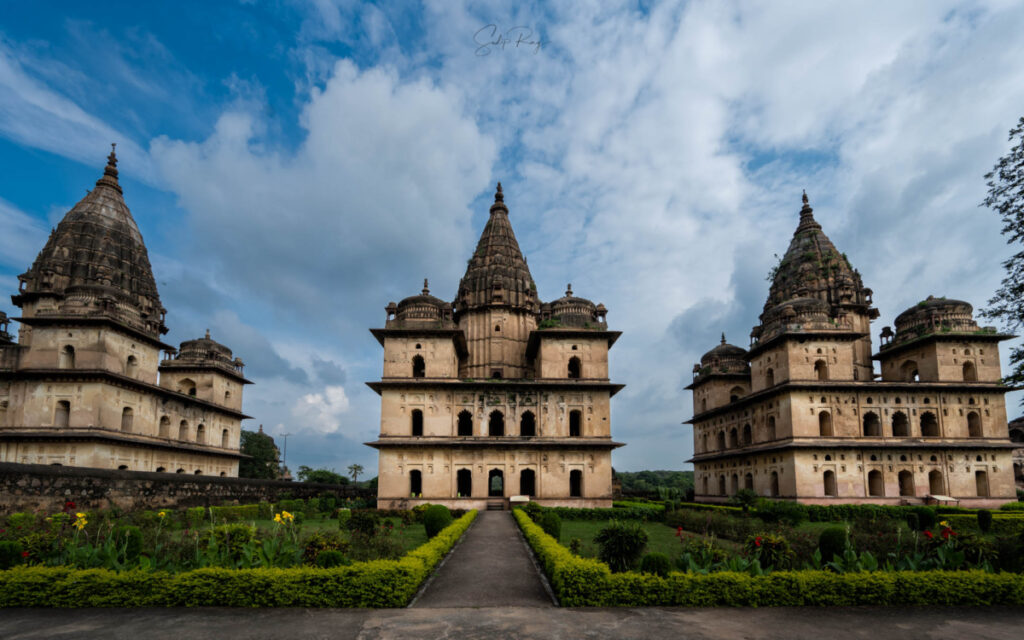
We listed Orchha in our Madhya Pradesh itinerary without any expectations. But, boy did Orchha stop us in our tracks. As we treaded the hallways and chambers of the Orchha Fort, paid our respects at the Ram Raja Temple, stunned by the frescoes on the walls and ceilings of the Laksmi Narayan temple, gawked at the sky-kissing Chaturbhuj Temple, and admired the architecture of the Chhatris, we knew we were leaving bits of our hearts at Orchha.

About Orchha:
Orchha is located in Niwari district of Madhya Pradesh. It lies 14 km from Jhansi, 120 km from Gwalior, and 172 km from Khajuraho. Orchha was made the capital of the Bundeli kingdom by Raja Rudra Pratap Singh in 1531 CE. It continued to remain the capital of the entire Bundelkhand from 1531 to 1783 CE. Rugged hills, dense forest, and the Betwa or Vetravati River surrounded Orchha thus securing it and hiding it from the onslaught of the Mughal forces. The word ‘Orchha’ aptly means hidden. The town remained hidden from the Mughals and continues to remain elusive to tourists and explorers even today.
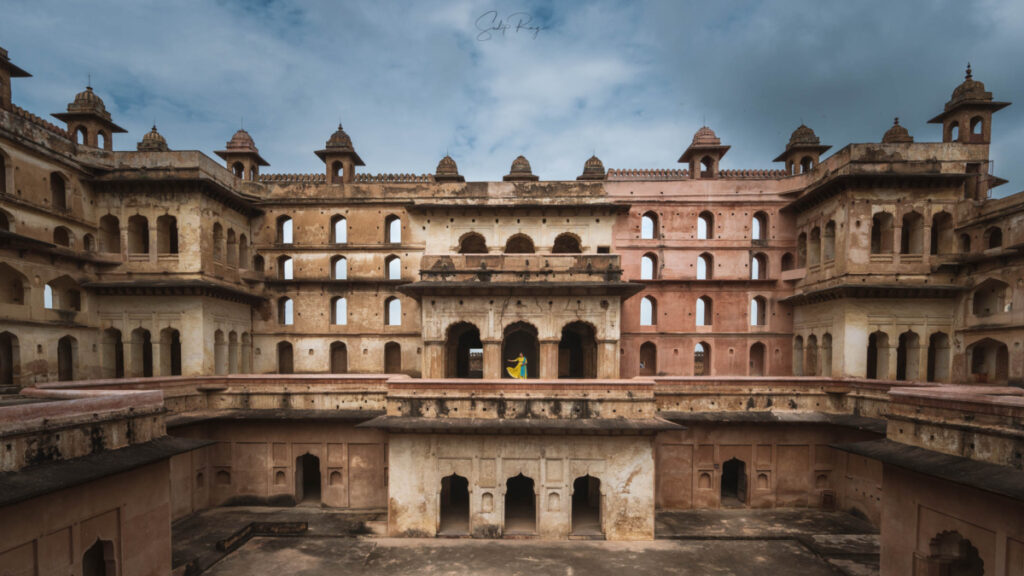
For more details on Orchha, head to our blog post here.
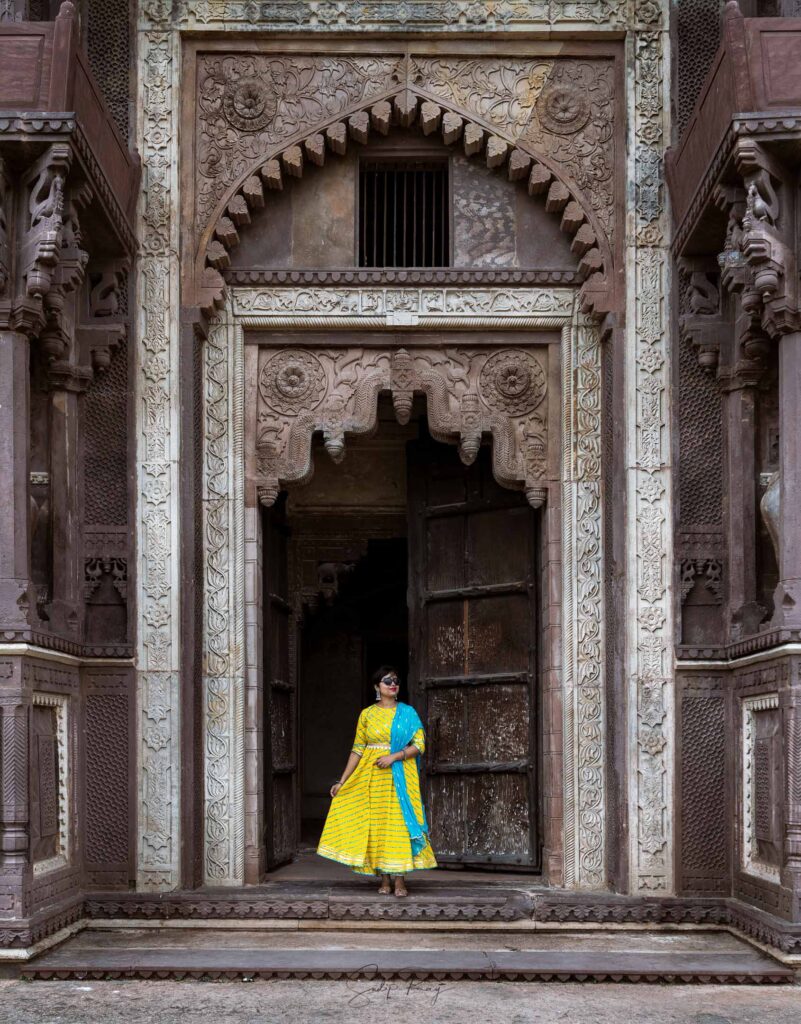
Ladakh: Chasing Heavenly Landscapes and Serenity
The camps were being set up near the twin lakes of Tsat Tso and Lang Tso. It has been an hour or so since we left the charming village of Rangdum and reached Pensi La, a high-mountain pass from where the Zanskar Valley starts geographically. A few moments ago, we were gaping at the stunning Drang Drung glacier, believed to be the second-longest glacier in India.

And now, we sat atop the tabletop hillock that separated the twin lakes. The hillock was covered with a carpet of green grass and dotted with countless flowers in blues, yellows, purples, pinks, and so on. We indulged in the scenery around us – the snow-capped peaks of the Zanskar range that surrounded the area, the crystal water of the glacial lakes that reflected the adjacent mountains, the vibrant flowers that danced to the tune of the soft wind, the marmots playing hide and seek nearby.

The scene reminded us of Amir Khusro’s famous words, “If there is a paradise on earth, it is here, it is here, it is here.” Truly, the Zanskar Valley of Ladakh is nothing short of a paradise. Remember the cliché fairy tale phrase of “land far, far away”? Zanskar Valley believed to be one of the remotest places in India, fittingly fits into this fabled adage. The faraway land of Zanskar is surrounded by the mighty Himalayas and crisscrossed by the feisty Zanskar River and its tributaries. The valley is further sprinkled with glassy lakes with occasional dollops of icy glaciers. The entire vista of Zanskar Valley appears otherworldly, thus making it India’s “Shangri La”.
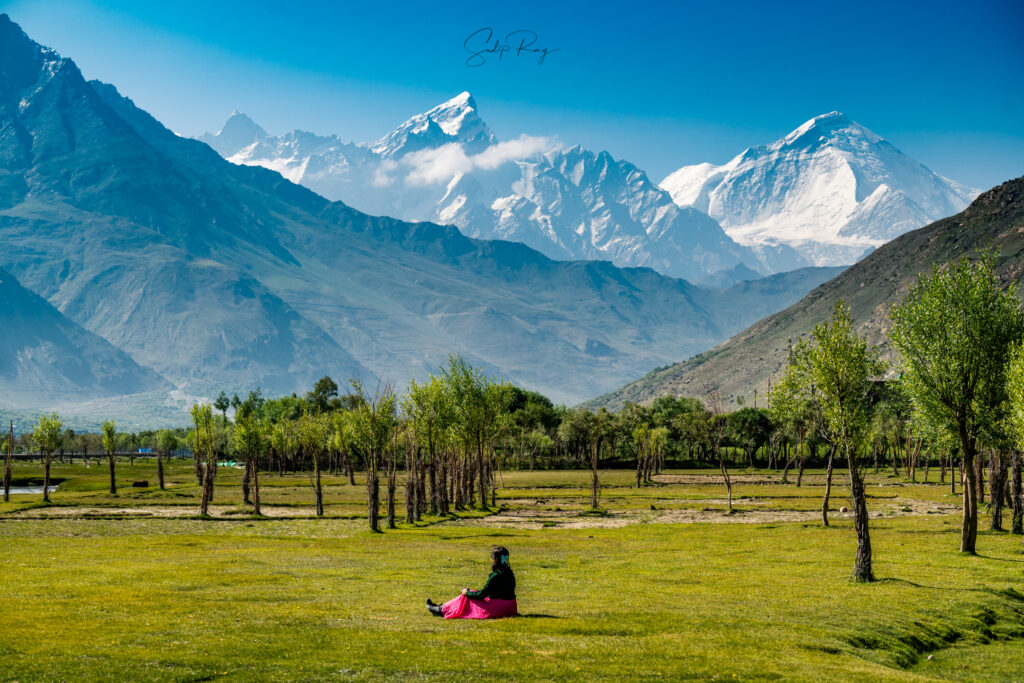
About Zanskar Valley:
Zanskar Valley is located in the Kargil district of the Indian Union Territory of Ladakh. The valley is predominated by the Zanskar range of the Greater Himalayas as also the Zanskar River. Being surrounded by high mountains and almost impenetrable passes, the Zanskar Valley has remained cut off from the rest of the world. The valley remains isolated during the winter for about seven months owing to heavy snowfall. The only medium of transportation is to walk over the frozen Zanskar River. For the Zanskari people, walking on the frozen river is their sole way to remain connected with the outer world. For travellers and trekkers, the icy river renders the renowned Chadar Trek.
Learn more about the Zanskar Valley of Ladakh in our blogs.
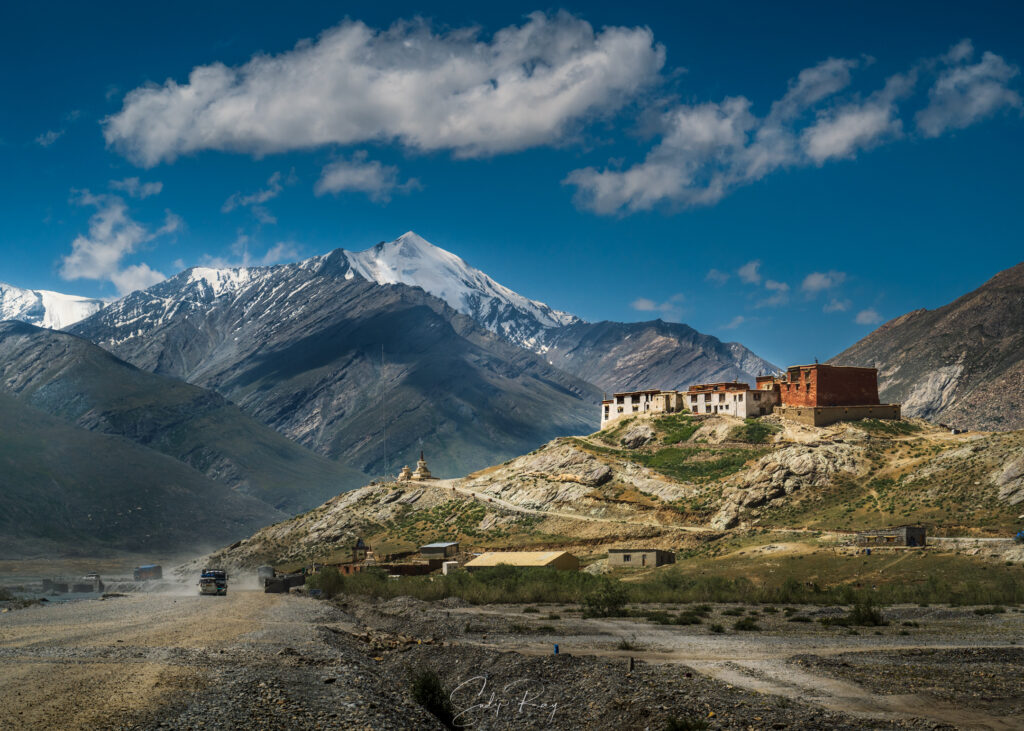
Varanasi: Where the Ganga Flows and Time Stands Still
We set out on the streets of Varanasi at the crack of dawn. The sun was still asleep, and the wintry morning was wrapped in fog. Yet, the city, believed to be even older than the history, was bustling. Devotees marched to offer their ‘puja’ at the Vishwanath Temple, pilgrims trudged to take a dip at the Dashashwamedh Ghat, roadside tea stalls fanned their ‘chullahs’, a temple devoted to one ‘Khichdi Baba’ dished out plates of khichdi to the followers.
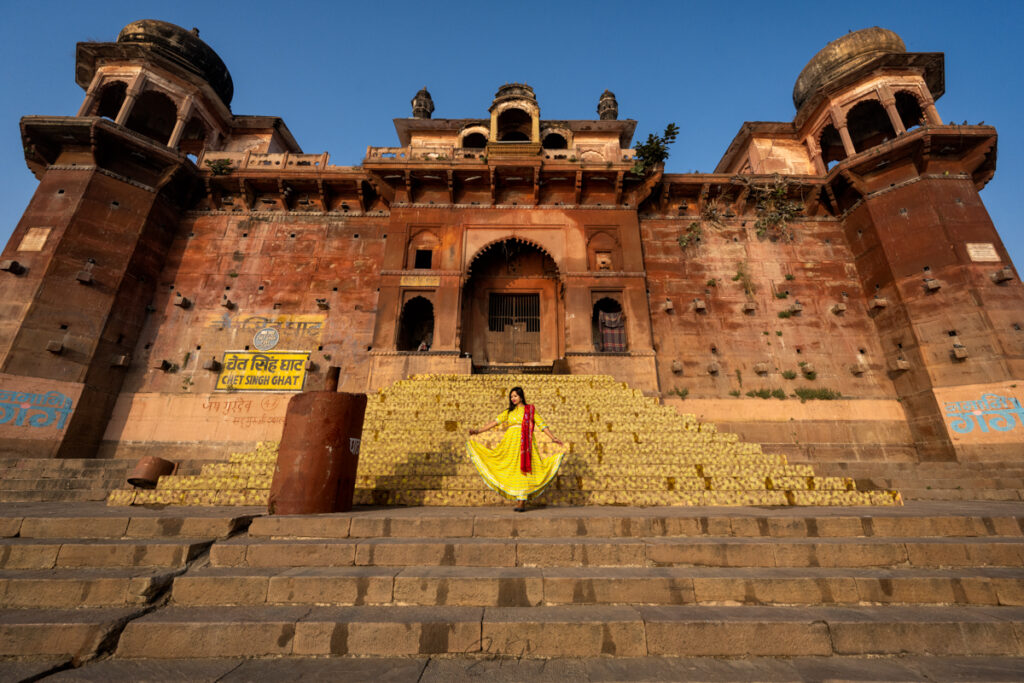
We reached the Dashashwamedh Ghat, and it dawned on us why Varanasi’s heart lay in her ghat. The ghats act like a stage, where the Hindu rituals – starting from birth and ending with death – are enacted. Even at dawn, the ghats were buzzing with pilgrims performing diverse rituals with the help of priests.
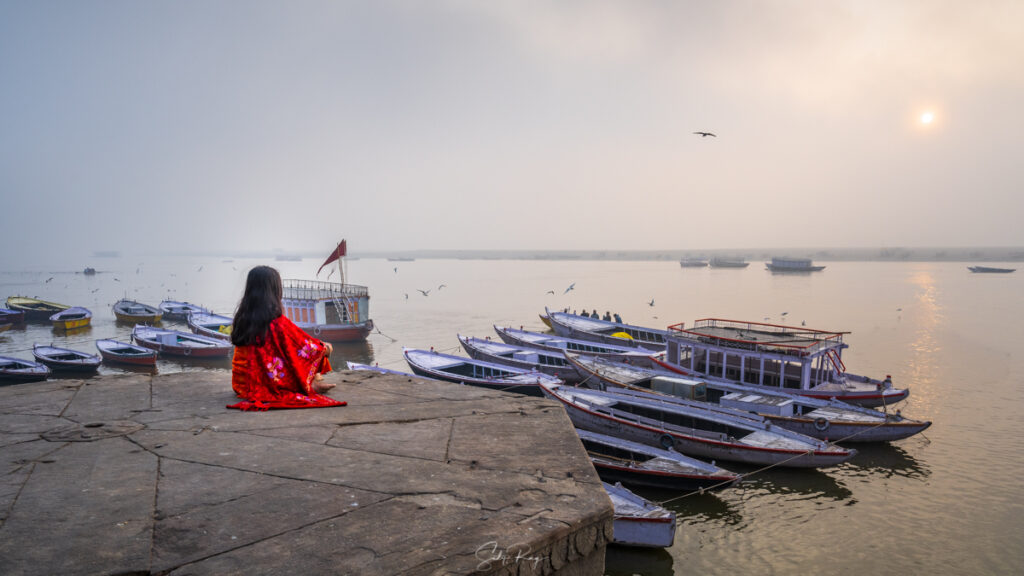
We left the crowded Dashashwamedh Ghat and strolled towards the Darbhanga Ghat. Myriad views kept us hooked – some honed their yoga skills on the steps, some fed the birds, devotees sang kirtans, monks meditated, artists captured the essence of the ghats on their canvas, people chatting away idly, young lovers, lost in their world, and children running amok.

We sat on one of the steps, and we gradually overcame the initial bewilderment and learnt to find calm amid the chaos. As they say, Varanasi “leaves you speechless, then turns you into a storyteller”. Varanasi is revered as the ‘city of light’ in the Rig Veda, as the city enables you to feel the reality and see what is already there.

About Varanasi:
Varanasi is located in the southeastern part of Uttar Pradesh. It lies on the left bank of the river Ganges. It is 315 km from Lucknow and 121 km from Prayagraj. Regarded as the holiest city of Hindus, it is believed that Varanasi was founded by Lord Siva himself.
Don’t plan your Varanasi trip before reading our blogs here.
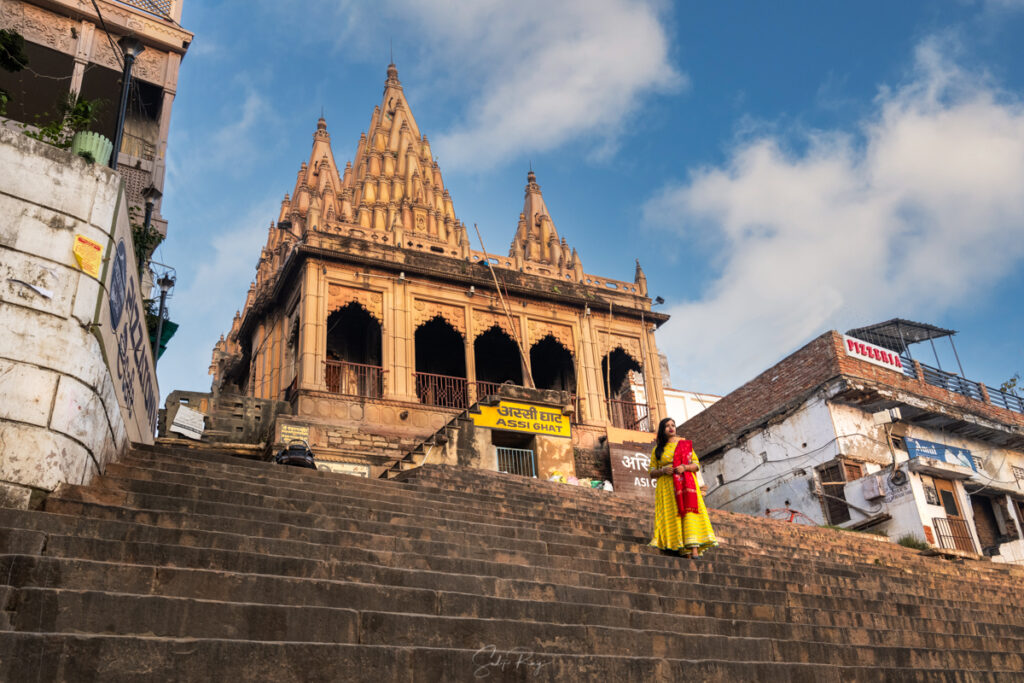
Meghalaya: Where Every Raindrop Paints Magic
The seemingly unstoppable rain had finally decided to put a brake on as we reached the village of Kudeng Rim. The hamlet itself was shrouded in a thick veil of clouds. With the cloud sheathing our visibility and the road mud-spattered, we tiptoed towards the sole tea shop. The piping hot tea was no less than nectar, rejuvenating us from a bumpy ride and gearing up for the hike ahead.
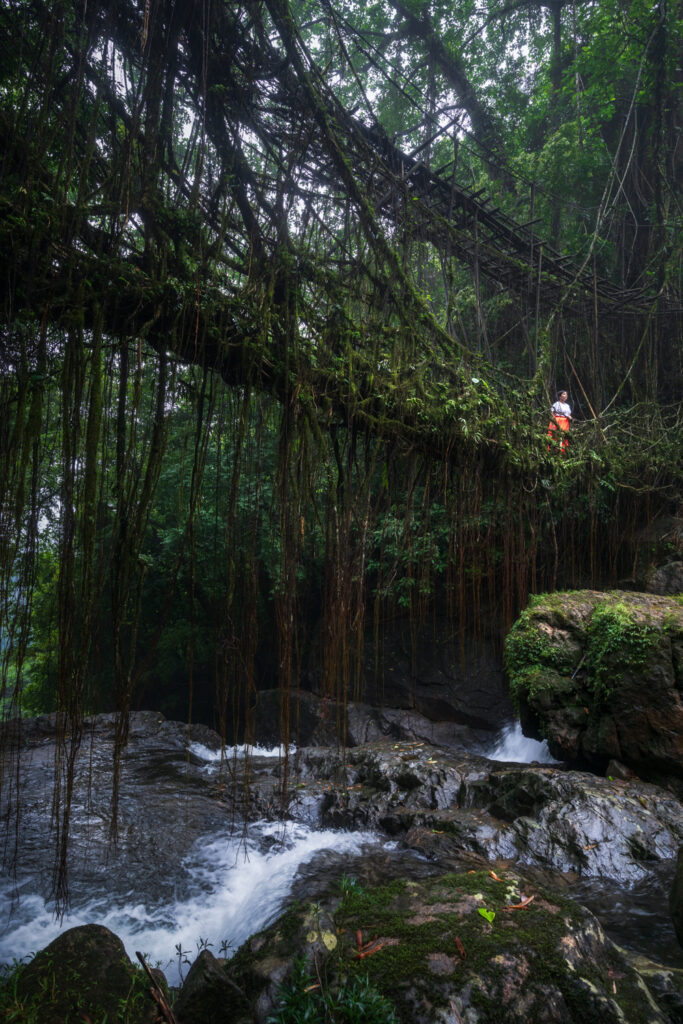
After the much-needed tea break, we embarked on a hike to experience the living root bridge of the Kudeng Rim village. The path leading to the root bridge is nothing more than hundreds of craggy, moss-covered steps, which have turned slippery thanks to the heavy rainfall. The path passes through a jungle. As such, we were accompanied by big, bright butterflies, weird-looking spiders, mushrooms of various shapes and sizes, snails, and so on.
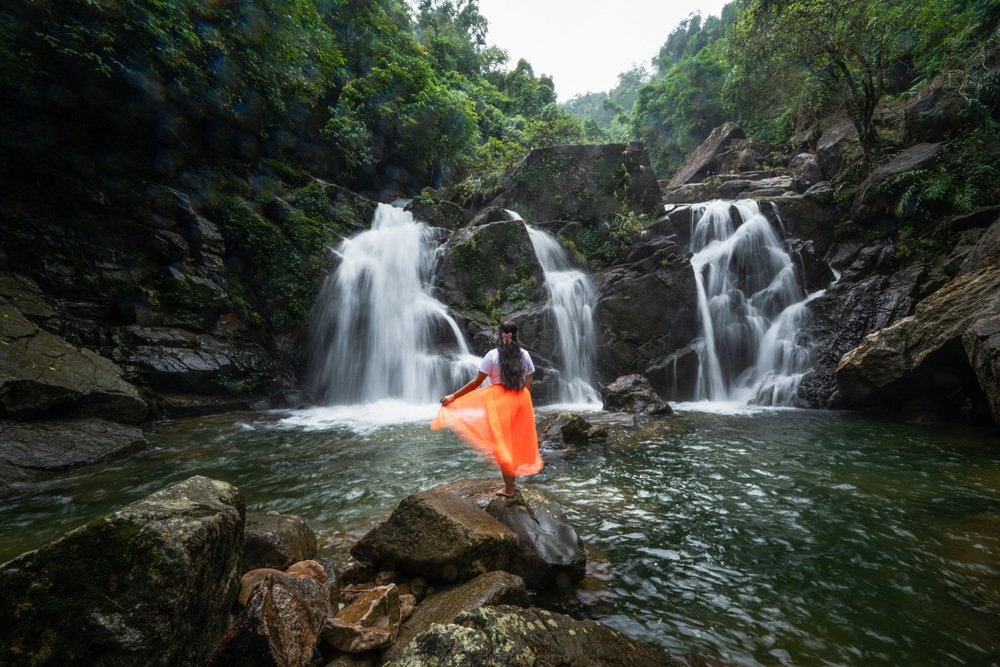
Climbing down the stairs was indeed an act of balancing. We had to watch our steps and tread carefully on the rocky steps. After more than an hour, we reached the bottom and beheld the wonder that is the living root bridge with a waterfall flowing beneath. It was at this moment that we knew, Meghalaya had cast its spell on us.
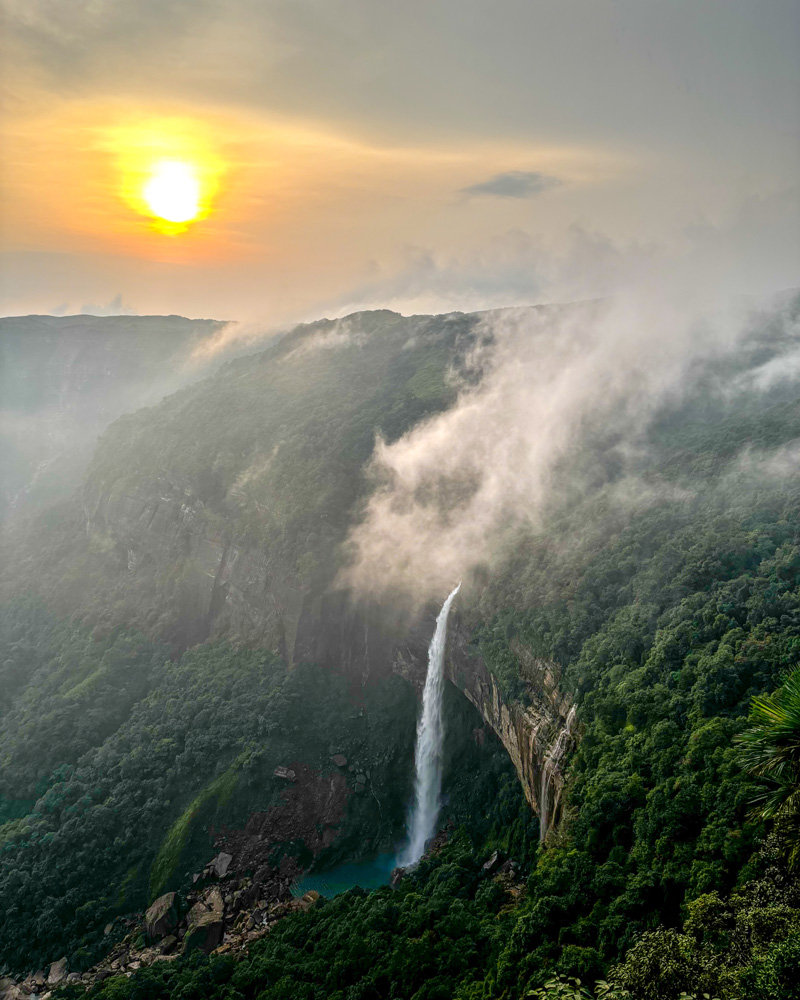
About Meghalaya:
Meghalaya is one of the northeastern states of India. Endowed with unbridled natural beauty, Meghalaya is home to some of the most magnificent waterfalls in India. In addition, the state boasts a few of the longest subterranean cave systems in the world. It is also characterized by unbelievable landscapes such as canyons, natural pools, rolling hills, and so on. Meghalaya’s bio-diversity is also off the charts. From bioluminescent mushrooms to luxuriant orchids, from Clouded Leopard to Hoolock Gibbon – Meghalaya is truly a biodiversity hotspot.
Check out our Meghalaya blogs here.
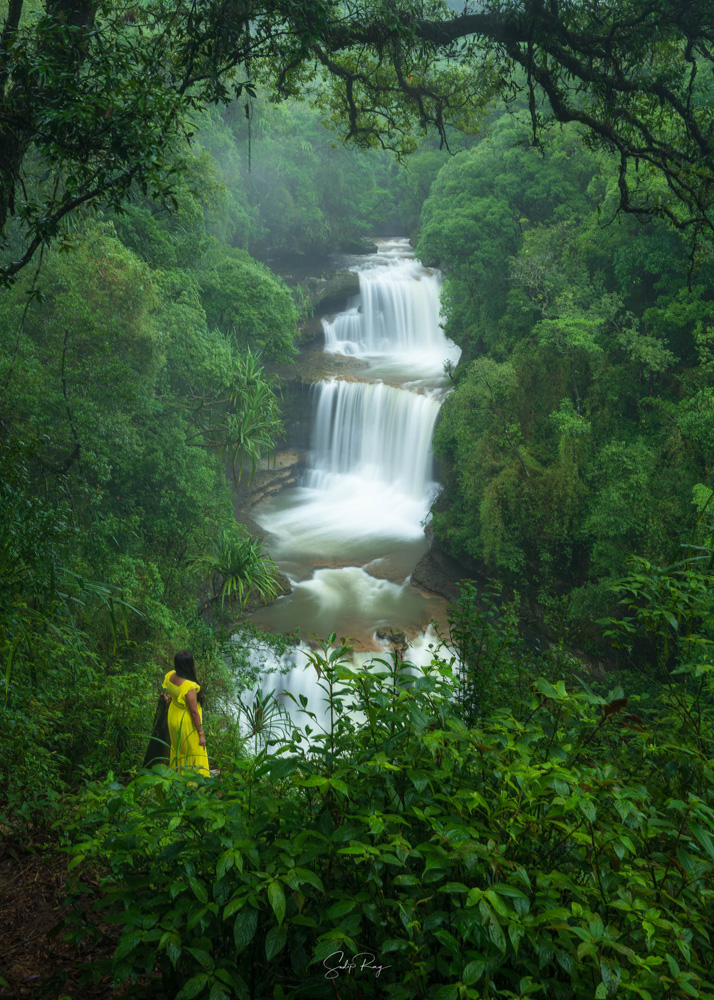
Thanjavur: A Celebration of Tamil Heritage
The previous night, we could barely contain our excitement and hardly slept. We were out of bed at dawn and reached the gate of the Brihadishvara Temple sharp at 6 in the morning. Two stunning Gopuras welcomed us. Both are characterized by barrel-vaulted roofs and a plethora of superb sculptures. The sculptures depict a pantheon of divinities such as various forms of Siva and his consort Parvati, Ganesa, Surya, Vishnu, and so on. The sculptures were so stunning that we lost track of time.
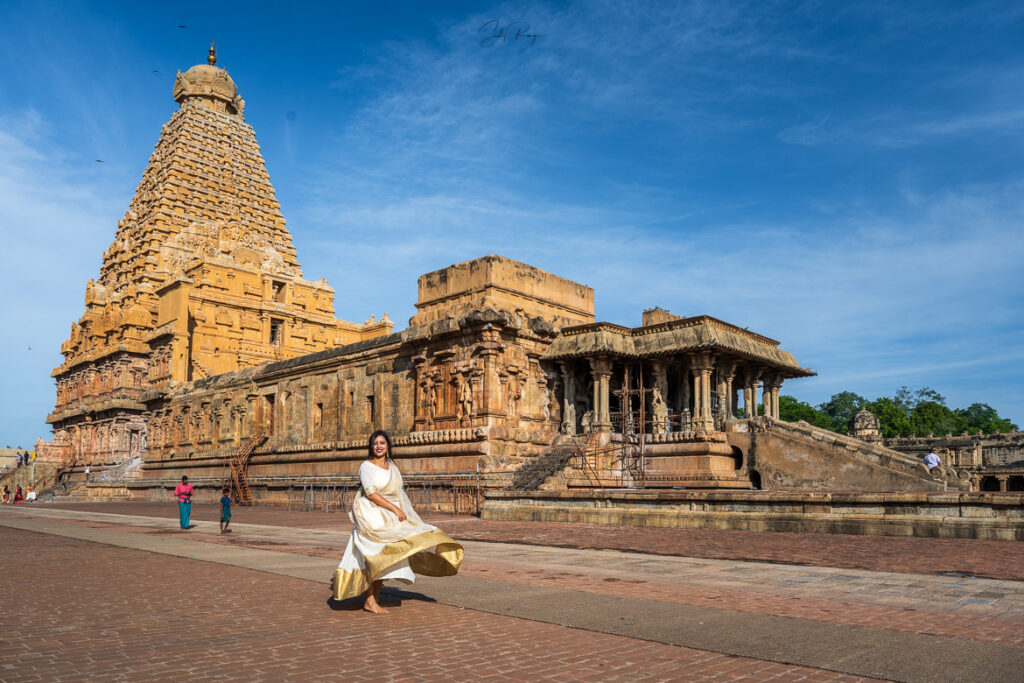
As we entered the courtyard, we stopped in our tracks and stared in amazement at the sight unfolding before us. Right before us, there was the magnificent Brihadishvara Temple. With its vimana touching the sky, this resplendent temple is regarded as an icon of the Tamil Dravida style of temple architecture. It was built by Rajaraja the Great and served as a symbol of the Chola imperial power. Our breaths were taken away. The temple captivated us and left us starry-eyed.
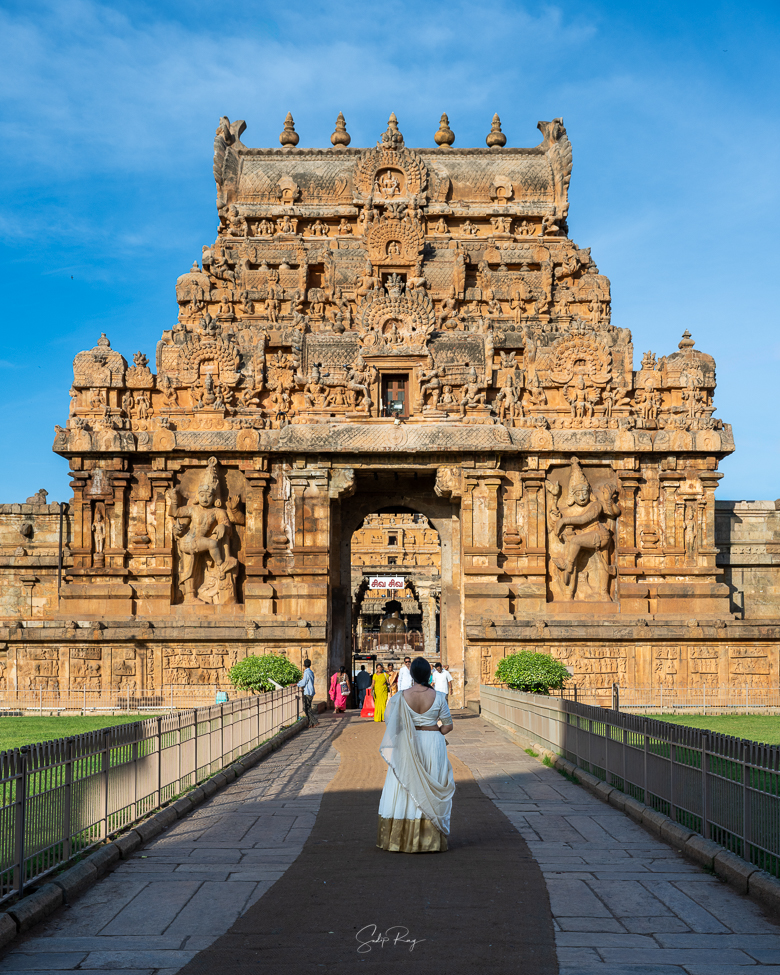
As we circumambulated the temple, we admired the intricate sculptures on the walls of the Brihadishvara Temple – Tripurantaka, Uma-Mahesvara, Ganesha, Ardhanarisvara, Saravati, Gangadhara, and so on. We were also fascinated by the murals inside the temple that date back to the Chola era.
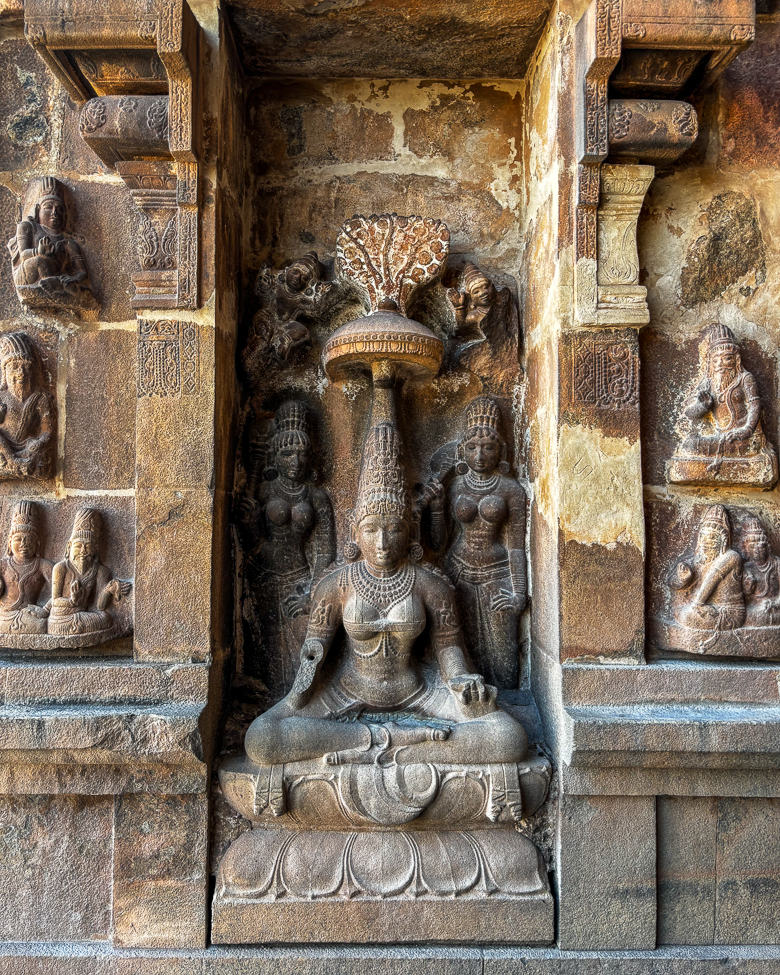
About Thanjavur:
Thanjavur, known previously as Tanjore, was the imperial capital of the Cholas. Thanjavur is 344 km away from Chennai, 185 km from Madurai and 57 km from Tiruchirappalli. Thanjavur’s heart is the Brihadisvara Temple. Dedicated to Siva, the construction began in 1003 CE and was completed in 1010 CE. The Brihadisvara Temple is also known as Rajarajesvaram (named after its illustrious author) and Thanjai Periya Kovil or Tanjore’s Big Temple.
Head to read more on Tamil Nadu here.
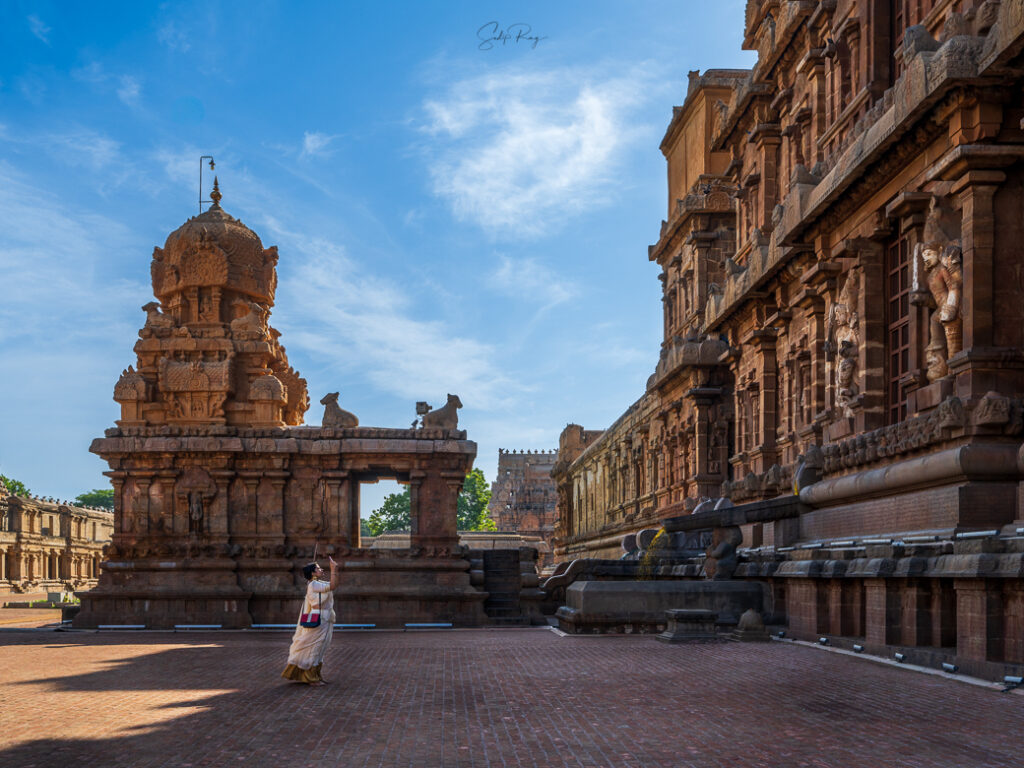
Jibhi: A Soulful Sojourn to the Himalayas
The embers crackled inside the ‘bukhari’ (a traditional heater used extensively in Himachal Pradesh), as its tender warmth comforted us on a freezing December evening. After spending the whole day hiking around the Jalori Pass, we wrapped ourselves under layers of blankets inside our cottage, sipped cups of steaming tea, and binged on ‘The Witcher’.
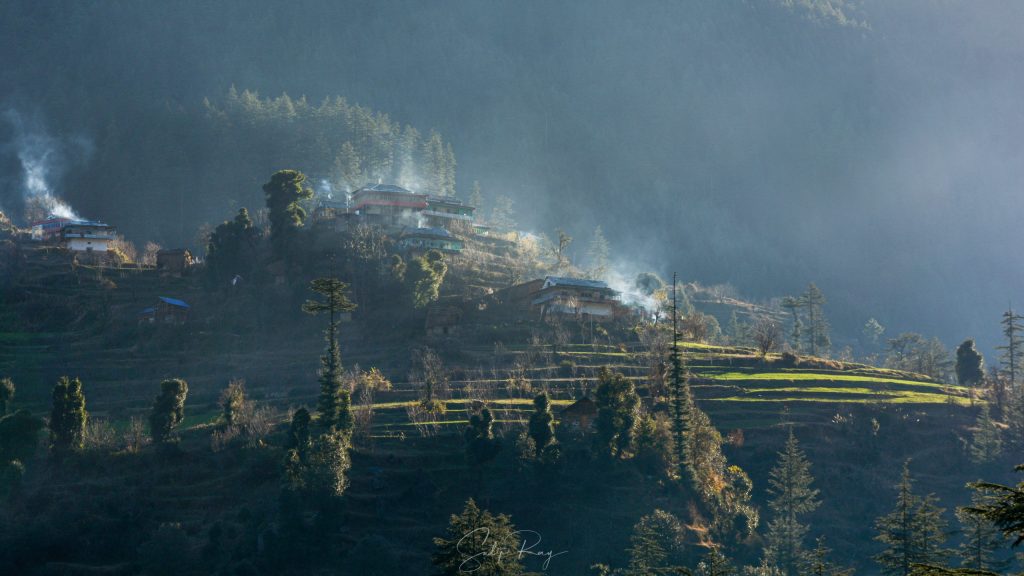

On a moment’s whim, we decided to go to the balcony. Armed with our woollens, we tiptoed outside. Needless to say, the cold was biting and frosty winds cut sharply like a knife. Shivering, we gazed at the silhouette of the hills and pine forests and heard the faint sound of the Tirthan River. The tranquillity tugged at our heartstrings. We looked up, and the night sky floored us. Zillions of stars sparkled, creating a stellar canopy over our heads. With zero light pollution in Jibhi, the starry sky put on a show like no other. It felt as if we could touch the sky and hold the stars in our palms. Jibhi surely left us starstruck! It gifted us a night to remember forever.

About Jibhi:
Part of the picturesque Tirthan Valley of Himachal Pradesh, Jibhi is a small village where nature has showered its endless bounties. It lies 481 km from New Delhi, 226 km from Chandigarh, 101 km from Manali, and 82 km from Kasol. Jibhi is a perfect place to escape the hustle of our daily lives. In Jibhi, peace rules supreme and where murmurs of the river will be a therapeutic balm to your heart and soul. And the rustling of the pine and deodar trees will take your mind off everything.
Read our Jibhi travelogue here.
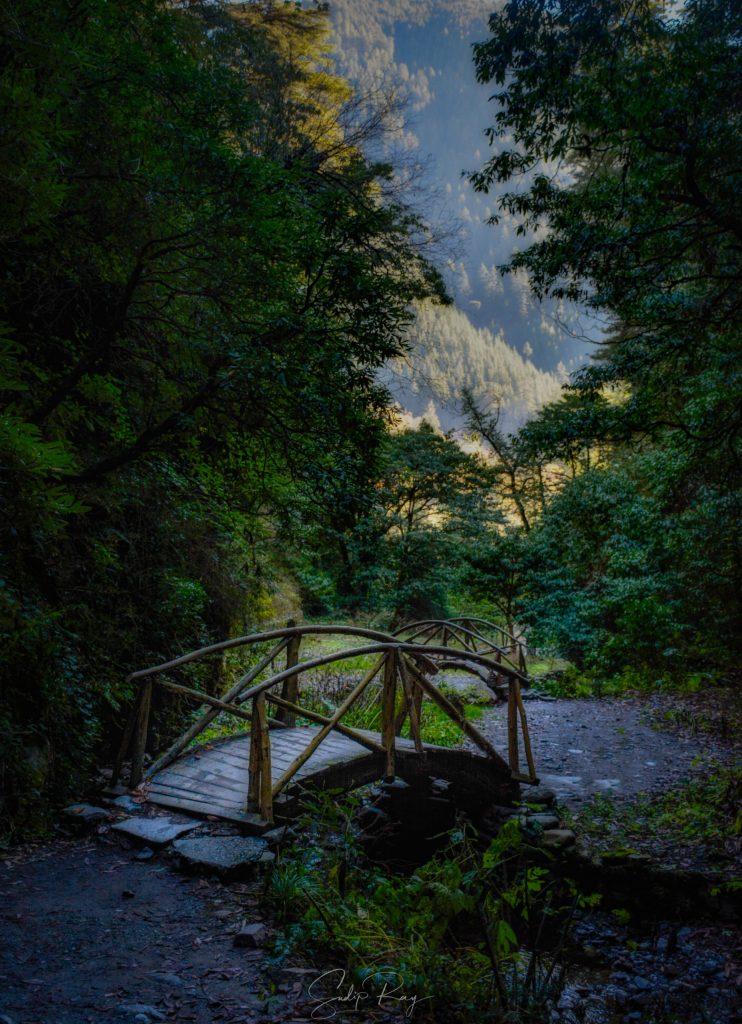
That’s it, our favourite destinations in India. Which destination in India would you love to revisit? Share your thoughts in the comment section.
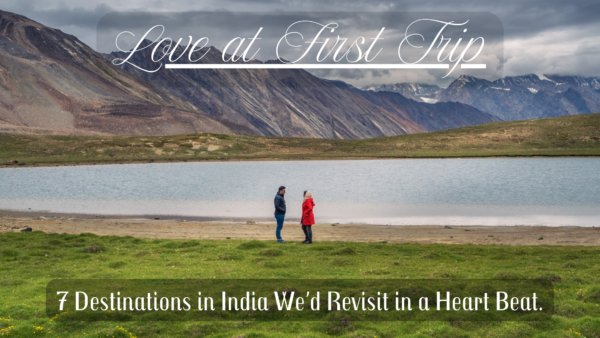
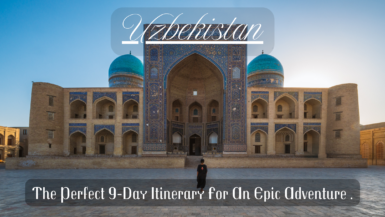

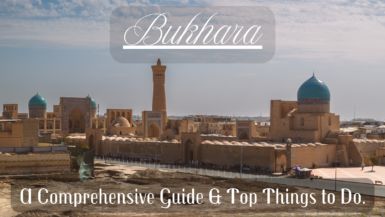
Leave a reply